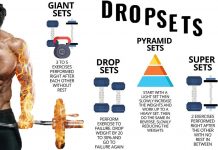🚨 WHICH MUSCLES DO YOU ISE WHEN BENCHING?
✅ Most people correlate the bench press to a “chest” exercise and while that’s actually true, let’s see what other muscles come into play.

[wp_ad_camp_2]
🔥 PRIME MOVER: The Pectoralis Major is the primary muscle used in the Bench Press. Both the Sternal and Clavicular heads of the Pectoralis Major transversely flex the shoulders during the bench press (Lauver 2015, Duffey 2008). Pectoralis are utilized the greatest in the lower portion of the decent phase and the early portion of the lifting phase. Peak activity in the lift phase occurs early (35% lift time). (Duffey 2008)
SYNERGISTS: The Anterior Deltoid assist in transverse flexion of the shoulders as well as flexion of the shoulders, particularly when the upper arms are closer the sides of the body. The Anterior Deltoids are utilized the greatest in the mid position in both the descent and lifting phases (Duffey 2008).
Triceps, particularly the lateral and medial heads extend the elbow during the Bench Press. They are utilized the greatest in the lifting phase as compared to the lowering phase. Like the Pectoralis Major, maximal activity of the triceps actually occur late in the descent phase and early in the lift phase. Their involvement also peaks again near the top of the lifting phase, particularly with a narrower grip. (Duffey 2008)
In addition to the major phasic (dynamic) muscles the bench press also uses tonic (stabilizing) muscles: scapular stabilizers (serratus anterior, middle and inferior trapezius), humeral head stabilizers (rotator cuff muscles), and core (transverse abdominis, obliques, multifidus, erector spinae, quadratus lumborum).
[wp_ad_camp_3]

[wp_ad_camp_5]
Biceps Brachii act as a dynamic stabilizer with low relative activity. Clemens (1997) measured Biceps Brachii involvement at approximately 22% maximum voluntary isometric contraction.
Some people might argue the fact that the “role” might change depending on the portion of the exercise analyzed, but generally speaking, this is the way I see it.

















































